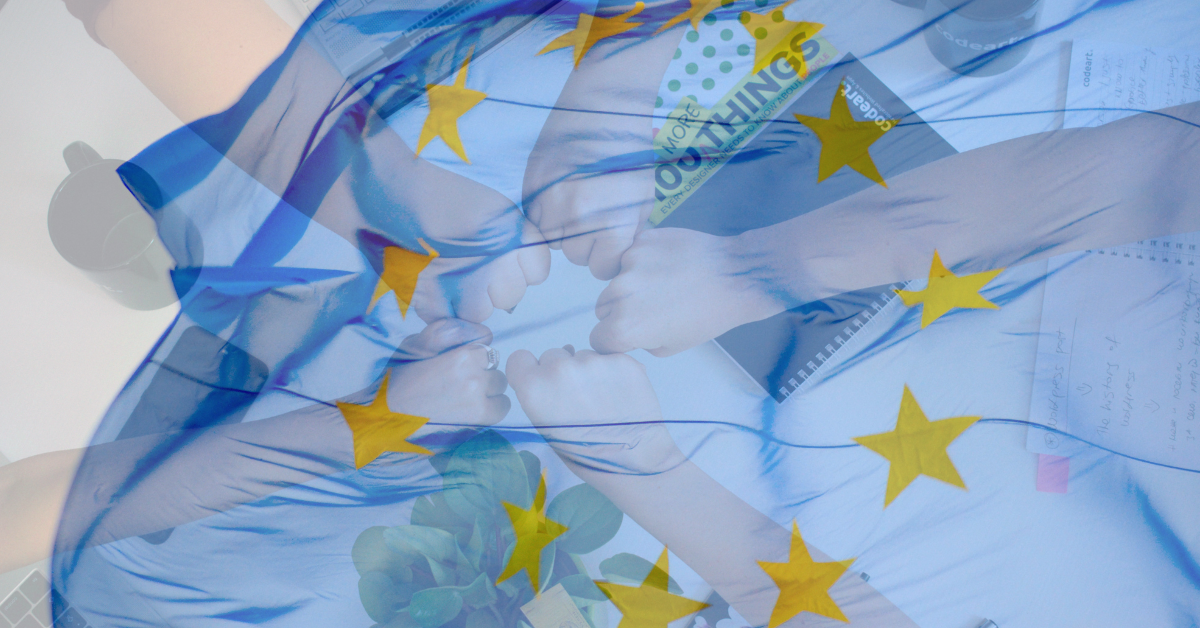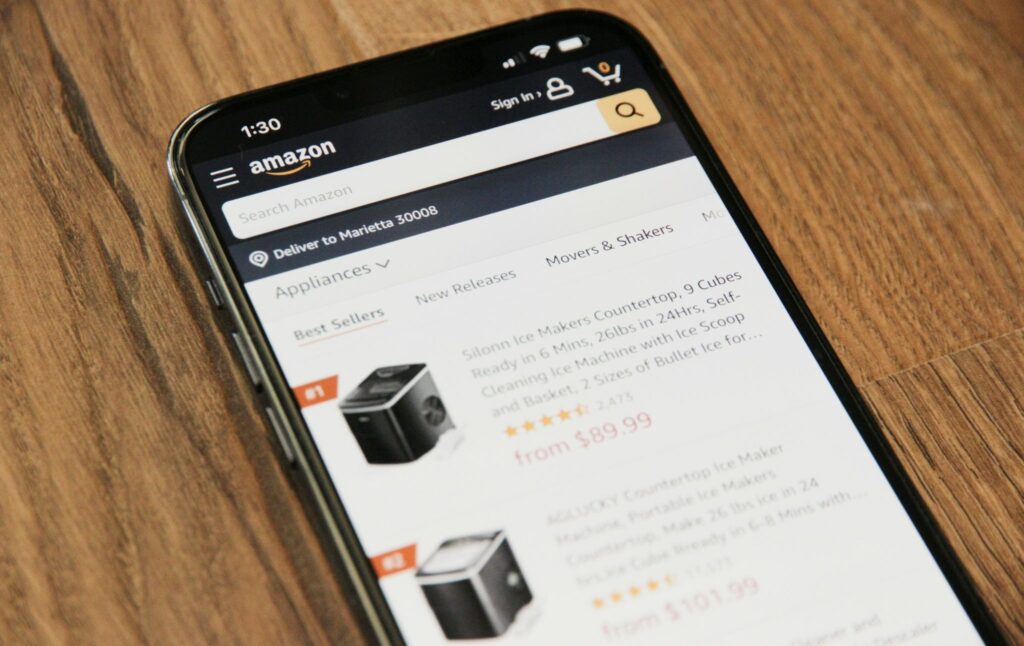The role of coopetition in Europe’s retail
Written by
Kinga EdwardsPublished on
Learn how European retailers team up on logistics, data, and sustainability to stay competitive while keeping markets open and fair.

European retail is full of friendly frictions. Supermarkets share trucks in sleepy counties, then race each other with weekend promos. Fashion groups swap vendor data standards, then compete on drops and looks. That dance has a name:
coopetition.
Done right, this approach helps retailers grow reach, cut costs, and move faster without tripping legal wires or dulling their edge.
And today, we will map coopetition in Europe: where it works, how, and how to design it so it scales across borders.
What “coopetition” really mean?
Coopetition is a strategy, when direct rivals team up on non-differentiating layers, like:
- logistics routes,
- seller onboarding checks,
- product data schemas,
- repairability labels,
- or returns barcodes,
while still competing in other areas, like pricing, branding, and user experiences.
It shows up as joint ventures, shared services, co-marketing for new markets, knowledge exchanges, etc. So, you pool resources where duplication creates waste. You guard the parts shoppers use to choose you.
That framing mirrors the classic definition: collaborate with competitors where both sides benefit, keep competing where you win hearts and baskets.
Why coopetition in Europe is having a moment
Three policy currents push retailers toward smarter cooperation.
First, the EU’s modern view of competitiveness rests on three pillars that work together:
- Competition enforcement to keep markets open.
- Pro-competitive industrial policy to fix real market failures.
- Regulation for monopolised markets to mimic competitive outcomes.
The point: these tools are complements. If your collaboration helps markets work better, while avoiding price fixing and foreclosure, you’re swimming with the tide, not against it.
Second, scale matters. Deepening common rules lets multiple firms reach efficient scale through growth, not consolidation that kills rivalry. That’s a green light for coopetition in Europe aimed at harmonising nuts-and-bolts layers (like payment rails, identity verification, product taxonomies, logistics labels). Firms could expand across borders without reinventing everything in each country.
Third, the Digital Markets Act leans into contestability and fairness on gatekeeper platforms with obligations around data access, interoperability, and non-discrimination. That shifts incentives for retailers and marketplaces to build open, portable connections and avoid clubby behavior that boxes out smaller sellers.
Where coopetition fits in retail
There are several specific areas where coopetition in Europe makes sense:
Shared logistics and last-mile

Delivering to dense city blocks or long rural routes punishes solo operators. Fortunately, rivals can co-run micro-fulfilment hubs, night-time trunking, or parcel lockers. And they can still keep tracking pages and CX separate. It slashes empty miles and improves service reliability.
Payments, identity, and fraud tooling
A shared risk-scoring service or ID verification framework lowers fraud and chargebacks for everyone. You still choose providers and checkout UX. You just stop paying five times to solve the same compliance hurdle.
Product data and sustainability standards
Retailers need consistent attributes for size, fabric, origin, repairability, warranty, recycling. Vendors groan when every buyer demands a different feed. A common schema, open API, and a basic certification playbook help suppliers comply once and sell many times. Each retailer is free to tell a different story to the shopper.
Marketplace seller trust

Seller vetting takes time: VAT numbers, product safety checks, brand permissions. A shared trust network with clear, open criteria speeds onboarding without lowering the bar. Each marketplace decides fees, ranking, and merchandising.
Sector-wide skills
AI literacy, privacy-by-design, retail media measurement – everyone needs a baseline. A talent consortium for training and certifications raises the floor and helps SMEs catch up. That’s a classic externality fix: broad benefits that no single firm would fund alone. It maps directly to pro-competitive industrial policy logic.
Returns rails
Standardised labels and status codes make reverse logistics less painful. A neutral hub can route returns to refurbishers, outlets, or recycling, while each retailer sets policy and fees.
Benefits retailers actually feel
- New markets without heavy lift. Teaming up with similar players lets you enter regions or categories you’d struggle to serve alone.
- Faster innovation. Shared insight and pooled experiments cut cycle time. A single POC can validate a standard, then everyone implements it on their own stack. Less reinvention, more learning.
- Lower risk. Big infrastructure bets feel less scary when costs and know-how are shared. You avoid single-vendor lock-in and spread exposure.
- Cost efficiency. Economies of scale on “plumbing” are real—one integration spec, one compliance checklist, one set of test suites.
- Stronger offers. Combined strengths make a bigger pie. One player brings depth of assortment, another brings delivery coverage – together, the shopper sees a better proposition without losing brand choice.
- Skill lift. You pick up best practices from neighbours who’ve solved gnarly problems already. Your teams advance together instead of climbing the same hill alone.
All those gains show up when coopetition in Europe is scoped to neutral ground, built with open access, and protected from sensitive information sharing.
Good & bad patterns of coopetition in Europe
The easiest way to tell if coopetition in Europe is healthy is to look at how it’s structured. The good patterns expand access and make the market more vibrant. The bad ones quietly tighten it.

Good patterns
✅ They start with openness. When retailers share neutral layers like sustainability data or logistics infrastructure, the rules should be clear and open for new players to join. A solid example is the rise of open product data standards in European fashion. A consortium defines an attribute schema, but any brand can implement it.
✅ Transparency and data sharing also matter. Keep technical documentation public, so smaller firms can plug in without expensive integrations. Use clean rooms, aggregation, or third-party operators. If you can show that your project helps new entrants compete, you’re safe.
Bad patterns
❌ They hide behind soft language: “industry alignment,” “harmonisation,” or “efficiency task forces.” Sometimes they’re cartels with a prettier name. If the project talks about “price discipline,” “volume coordination,” or “market allocation,” it’s already offside.
❌ Another red flag: closed membership. When a consortium refuses to add new retailers or smaller sellers, it starts looking like exclusion.
❌ Even shared advertising pools can turn problematic. If retailers agree to divide ad inventory or rotate placements based on contribution, that can manipulate visibility. The safer route is open participation, transparent criteria, and third-party oversight.
The legal & policy guardrails of effective European Union competition policy
All right, let’s talk now about the legal side of EU competition policy. According to bruegel.org:
#1 Competition enforcement still applies. Agreements that touch price, output, territories, or strategic plans don’t become just legal because there’s a “co-” in front. Cartels, abuse of dominance, and anticompetitive mergers remain off-limits. Collaboration must not foreclose non-members or raise barriers to entry.
The modern European stance is clear: enforcement protects rivalry, and rivalry drives productivity.
#2 Use the industrial policy lens when it fits. If you seek grants or tax support for a retail consortium, tie it to open standards, open APIs, and non-exclusive access that deepens the single market. Avoid projects that entrench incumbents or pick winners. That’s the heart of pro-competitive industrial policy.
#3 Respect the DMA tone on digital rails. If your collaboration sits on or near a platform with gatekeeper obligations, design for interoperability, non-discrimination, and business user rights from the start.
The DMA exists because antitrust alone couldn’t restore contestability on digital platforms; it sets the spirit for responsible ecosystem building.
#4 Build for a bigger Europe, not smaller clubs. The path to scale runs through harmonisation and openness. Design onboarding routes for SMEs, publish specs, and let new members in on fair terms.
That mindset aligns with deepening the single market, which is the durable way European firms achieve scale without gutting rivalry.
#5 Operationalise compliance. Set up independent operators or trustees for shared utilities. Use data clean rooms and role-based access so sensitive fields never cross. Codify “no-go” topics in charters and meeting agendas. Add sunset clauses and periodic external reviews to keep the project honest and the door open for fresh competition.
In simple terms, companies can work together, but only within clear limits.
- They can’t fix prices or divide markets — competition laws still apply.
- If public funding is involved, projects must stay open to others and strengthen the EU single market, not favor big players.
- Digital collaborations must follow Digital Markets Act rules — be fair, interoperable, and transparent.
- Partnerships should grow markets across Europe, not create closed circles.
- And finally, every alliance needs clear compliance steps: independent oversight, safe data handling, and regular reviews to keep things fair and competitive.
Keep these rails in view, and coopetition in Europe becomes a force multiplier—lower friction, faster scale, stronger resilience.
Actionable steps on how to design a compliant coopetition deal
Setting up coopetition in Europe that works takes both creative and legal thinking. So, how to begin?
Start by scoping the neutral layer. Pick something that doesn’t touch pricing or customer-facing differentiation. Returns infrastructure, sustainability tracking, and product data standards are good zones. Avoid marketing campaigns, loyalty systems, or pricing algorithms — those belong firmly in the competition space.
Bring in competition counsel early. Many European projects fail because they forgot to document intent. A short note explaining what’s shared, why, and how information is handled will save you months later.
Next comes governance. Appoint an independent operator or secretariat. Define how data flows, who has access, and how decisions are made. Add criteria for joining, timelines for review, and a dispute process. This also reassures regulators that no one is steering the project to gain leverage.
If your coopetition involves digital infrastructure, prioritise standards. Public documentation, versioning, and testing tools make integration fair. Publish onboarding guides so new participants can join without backroom deals.
When funding or incentives enter the picture, apply the industrial policy logic: aim for externalities that serve everyone. Public funds should fix shared gaps like skills, data, or sustainable logistics — never boost a single brand. Tie grants or tax benefits to open access and EU-wide reach.
Finally, define your success metrics. Track operational wins — faster seller onboarding, shorter delivery cycles, lower emissions per parcel, or reduced returns handling time. They also help demonstrate that the project drives productivity.
A more detailed checklist:
▢ Pick one neutral pain point.
▢ Find two or three peers with the same headache.
▢ Write a one-page principle sheet.
▢ Meet an independent operator and inform about your project.
▢ Launch a small pilot project.
▢ Make standards your friend. Keep documentation public, onboarding simple, and updates consistent.
▢ Measure operational gains. Track things like cost savings, faster onboarding, or fewer returns.
▢ Apply for funding wisely.
▢ Schedule review gates at 90 and 180 days. Assess what worked, what needs legal tuning, and where value really came from.
▢ Keep what scales, drop what drags.
And above all, talk to an expert and get a consultation with a competition-law specialist or policy advisor. A quick check from someone experienced in EU retail law can save you a lot of trouble later.
Last words about coopetition in Europe
The message from the coopetition idea is simple: cooperate smart, don’t give up on competition, and keep the market open.
As retail digitises faster, the line between cooperation and competition will blur even more. AI supply-chain forecasting, sustainability data exchange, and standardised loyalty frameworks all need shared foundations. The European market rewards those who design openness into every layer.
In the next few years, coopetition in Europe will shift from a novelty to a baseline. Sure, shoppers won’t see it, but they’ll feel it. In smoother deliveries, accurate data, cleaner interfaces, and trusted transparency.
***


